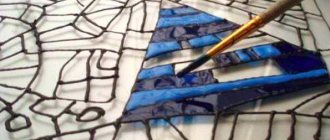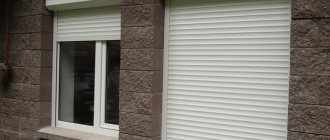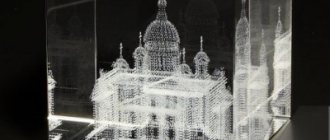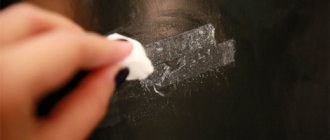The geometric parameters of window structures that are installed in civil buildings are strictly standardized by current GOSTs.
Each translucent element consists of a frame, which is made of profile parts and filling - a double-glazed window.
Most modern manufacturing enterprises can produce glass of any size, but to simplify the operation of facilities, standard and standardized sizes of glass for windows are used.
What sizes are there?
According to current regulations, most manufacturing enterprises produce glass for windows with certain dimensions, which often allows the following results to be achieved :
- Compliance with the requirements of unification, standardization and typification during the construction of multi-apartment or private economy-class residential buildings.
- The ability to accurately calculate the cutting of raw translucent elements for installation in window frames.
- A quick way to calculate waste in advance and, accordingly, the total cost of the translucent element.
- Depending on the dimensions and density, the consumer will always be able to calculate the weight of the window unit, as well as the glass unit that is included in it, which will allow you to correctly select the movable sash and fittings designed for a certain load capacity.
Note. The geometric characteristics of glass for translucent structures are the most important indicators, which requires studying the list of standard and non-standard sizes of these elements given below.
Standard
Typical sizes of glass for window structures in civil buildings are regulated by GOST 111-78 “Window glass”. According to the text of this document, the standard parameters of these elements are the following values :
- The length of the products varies from 500 to 2200 mm.
- The width of translucent elements ranges from 400 to 1600 mm.
- The thickness of the glass, depending on their strength indicators and installation locations, is from 2 to 8 mm.
It should be noted that the above dimensions are also assigned based on the conditions for safe transportation of products, loading and unloading operations, and depend on the maximum permissible transport dimensions.
When ordering glass, you should also not forget that GOST assumes the presence of possible tolerances and errors :
- For the length and width of the product - from 2 to 3 mm in the direction of increasing or decreasing the linear geometric characteristics.
- For glass thickness - from 0.1 to 0.4 mm, depending on the power of the product being manufactured.
Below is a visual table that accurately determines the relationship between the geometric parameters of glass and thickness, as well as permissible errors during manufacturing:
| Length of translucent element (L), mm | Width of translucent element (B), mm | Length of translucent element (t), mm | Maximum error in length and width (L, B), mm | Maximum error in thickness (t), mm |
| 500 – 600 | 400 – 500 | 2,0 – 2,5 | +/- 2,0 – 2,5 | +/- 0.1 – 0,2 |
| 600 – 700 | 700 – 750 | 2,5 – 3,0 | +/- 2,0 – 2,5 | +/- 0.1 – 0,2 |
| 1200 – 1300 | 700 – 800 | 2,5 – 3,5 | +/- 2,0 – 2,5 | +/- 0.2 – 0,3 |
| 1550 – 1600 | 750 – 850 | 3,5 – 4,0 | +/- 2,0 – 3,0 | +/- 0.3 – 0,4 |
| 1700 – 1800 | 1100 – 1200 | 4,0 – 5,0 | +/- 2,0 – 3,0 | +/- 0.3 – 0,4 |
| 2000 – 2200 | 1200 – 1300 | 5,0 – 6,0 | +/- 2,0 – 3,0 | +/- 0.4 – 0,4 |
| 2100 – 2200 | 1500 – 1600 | 6,0 – 8,0 | +/- 2,0 – 3,0 | +/- 0.4 – 0,4 |
Despite the fact that the above dimensions are strictly regulated by GOST, many manufacturing enterprises are guided by specially developed specifications, which may indicate other deviations and a wider range of dimensions of translucent elements.
Important. Before ordering glass, you should familiarize yourself with the complete list of nomenclature for each specific enterprise.
Special
In some cases, if there is an individual order, manufacturing enterprises are forced to produce glass for window structures with non-standard linear dimensions :
The length - for display windows, or for strip panoramic glazing, can reach up to 3.6 - 7.2 m.
But such translucent elements must be tempered and have a thickness of at least 10 - 12 mm.- Width - in width, for ease of transportation and the possibility of vertical transportation of products, as a rule, windows do not exceed 2000 - 2400 mm.
If it is necessary to organize panoramic or showcase glazing, such windows are assembled from several elements in a single block, followed by sealing the seam with silicone compounds. - Thickness - when producing glasses with non-standard linear dimensions, in addition to changing the chemical composition, their increased thickness is also required - from 8 to 12 - 14 mm.
If the thickness of the glass does not satisfy the conditions of strength and elasticity, which is confirmed by static calculations under the influence of wind loads applied to the entire glazing area, then manufacturers decide to use triplex.
Several glasses with a thickness of 4 to 8 mm are glued with a durable polymer membrane, which greatly increases the elasticity and strength of the structure.
Types of sheet glass
Patterned sheet glass
Sheet reinforced glass is regulated by GOST 7481-78 . It is a glass sheet reinforced with a metal mesh located in the glass mass at a distance of at least 1.5 mm from its surface. It is used for glazing windows on the first floors, installing protective fences - i.e. where there are likely risks of vandalism.
Patterned sheet glass is regulated by GOST 5533-86 . Obtained by rolling method; relief patterns can be located on one or both sides of the sheet. If there are patterns on only one side, then the transparency of the glass should not be less than 0.75, if on both sides, it should not be less than 0.7.
Sheet colored glass - this term usually means glass colored in the mass. Metal oxides (iron, chromium, cobalt, etc.), sulfur compounds of iron, lead and a number of other metals, as well as sulfur and selenium are used as dyes. Dyes are introduced directly into the glass melt; By combining two or three types of dyes, you can get glass of any color.
Facade glazing with colored glass
In addition to glass colored in the mass, colored double-layer glass is also known, the color of which is imparted by a thin superimposed film of colored oxides.
Tempered sheet glass - its properties are regulated by GOST R 54162-2010 . The article on our website “What types of tempered glass are there” describes this type of glass in sufficient detail. We will not repeat ourselves, we will only say that glass, like steel, is tempered by thermal heating followed by rapid cooling. In this case, surface tension arises in the glass mass, which strengthens its surface.
The hardness of tempered glass is 5-6 times higher than regular glass. Processing of sheet glass after hardening is impossible: cutting and drilling of holes must be carried out before the hardening operation.
So is it possible or not to cut tempered glass? Our experts name three ways to cut this material. Want to know about them? – Read on our website
Where to buy tempered glass? Find the answer to this question here: https://oknanagoda.com/steklo/osteklenie-steklo/steklopaketi/gde-kupit-kalenoe-steklo.html
“Review of prices for glass partitions for home and office in Moscow” will help you figure out how much you can buy tempered glass partitions for
There is also armored sheet window glass. As a rule, this is a package of high-quality glasses glued together using spacers made of polymer film. The glass in such a bag, due to its hardness, absorbs the impact energy, and the film prevents fragments from scattering.
How to choose for a window?
In order to correctly select the dimensions of the raw translucent element for window units that are installed in buildings, it is recommended to take into account the following important nuances :
- Determining the fit dimensions of the frame for installing glass. Each profile element has a certain thickness and height. This allows you to calculate the total area of the translucent structure - a double-glazed window, which, in turn, is assembled from pre-cut glass supplied from the factory.
- Accounting for the number of translucent structures that can be assembled into double-glazed windows after cutting the raw material with a minimum remainder.
- Static calculation of strength and stability. It is carried out according to 2 groups of limit states, especially when it comes to high-altitude work at elevations above 30 m, where the pulsating component of the wind load is active.
- The weight of a movable sash of a window structure with standard hinge hangers should not exceed 70 kg, which is explained by safety conditions. If there is information about the density of the material, each consumer has the opportunity to easily calculate both the mass of a single flat glass and the entire structure with a frame as part of a double-glazed window.
Note. One of the main parameters for the developer, provided that several hundred sets of windows are purchased at once, is the price of the translucent structure, calculated per 1 m2.
That is why most consumers decide to include standard sizes of window blocks in the project, since these dimensions exactly correspond to the range of glass produced, which provides significant savings.
Organic sheet glass
Tempered glass is tested for strength
Above we talked about silicate glass. That is, one whose main material for production is quartz sand. But recently, organic glass, better known as plexiglass, as well as acrylic, have become widespread.
Regulates the properties of organic sheet glass GOST 10667-90 . Just as in the case of silicate glass, this standard specifies the dimensions of the sheets, their thickness, deviations in size from the nominal value, physical and chemical properties.
Organic glass is used both for glazing windows and for the manufacture of various kinds of translucent structures. The products obtained from it are relatively lightweight and durable. For more information about the use of plexiglass for construction and architectural purposes, read the article on our website “Plexiglas Window”.
Why is it important to choose the right one?
Determining the required geometric parameters for glass is the most important work, when carried out correctly, the following results are achieved :
Accurate determination of the required strength and deformability of the raw translucent element.- Calculation of the amount of waste and determination of the optimal cutting dimensions.
- Accurate calculation of estimates for the production of double-glazed windows, taking into account waste.
- Determination of the optimal thickness ratio, depending on the linear dimensions of the product.
- Calculation of the mass of each glass and the total quantity of the supplied batch, which also allows you to determine the carrying capacity of the transport.
- With the correct selection of glass sizes and thicknesses for windows, it provides adequate heat transfer resistance and sound insulation properties of the future enclosing structure.
Thus, if the linear geometric characteristics of a translucent element are incorrectly selected, the consumer is not only exposed to significant costs, but also risks not meeting current standards, which will affect the commissioning of the facility.
A little history
Glassblowers of ancient Egypt
It is believed that glass was invented back in Ancient Egypt, but was used in those days for making dishes, jewelry and for “pouring” bricks - giving the walls of buildings shine and beauty.
Glass began to be used to create translucent windows only in the Middle Ages in Venice. Currently, there are two main methods for producing sheet glass. Historically, the first is based on “pulling” glass from a bath. The classic version, in general terms, looks like this: a “boat” is immersed in a bath of molten glass mass - a fire-resistant beam with a die (slit) cut into it, tapering upward. The glass passes through the die, is picked up by the rollers of the rolling machine and, as it passes through them, turns into a sheet.
The article “Glass walls in the interior” will tell you about one of the options for using sheet glass
Read about projects of houses with glass walls in the thematic review on our website
Read about the use of sheet glass for frameless glazing at the link: https://oknanagoda.com/steklo/osteklenie-steklo/panoramnoe/bezramnoe.html
Production of glass using the float process
In 1952, sheet glass was produced using the float process. In words, the essence of this method looks even simpler: the molten glass mass is poured into a bath filled with liquid tin. Due to its lower specific gravity, glass is poured on top of tin in a thin layer and then formed into a perfectly flat sheet.
This method was first implemented in England, at the Pilkington sheet glass factory; Since then, this name has become a household name for quality glass.
Criterias of choice
When determining the thickness you need to take into account:
- Type of glass : tempered, corrugated, triplex, optiwhite, etc. The final strength of the product depends on this, which implies the need to thicken the panel.
- Load and installation features . The frame design allows the use of glass of minimal thickness, because the profile frame takes on the main stress created by the weight of the structure. There is no additional support in a frameless partition, so the weight parameter becomes critical in the calculation.
- Temperature . The room in which the partition is installed must be heated. Each type of glass is equipped with an indicator of the minimum operating temperature during the cold season.











